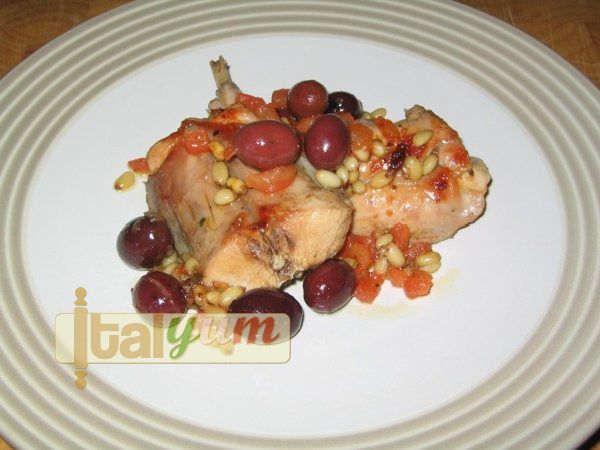
Rabbit Liguria style
A while ago I wrote a recipe called “Rabbit Emilia-Romagna style”. It was the first of three recipes I would like to publish about cooking rabbit. This is the second recipe and it comes from the Liguria region of Italy. Liguria is famous for its pesto sauce, but also for its superb olive oil and olives. For me, it is important that the recipes I publish are accurate and traditional. When I can, I buy ingredients that come from the area where the recipe comes from, so this time I managed to buy some “taggiasca” olives (native olives from Liguria) in brine and a bottle of extra virgin olive oil from the same region. Now, let’s cook…
Equip your kitchen – Available at Amazon now
Clicking on equipment pictures takes you to Amazon where you can buy the items. We get a small revenue share of anything you buy which helps keep the site running.
Ingredients
- 1 Rabbit (adult animal)
- 120 ml (4 fl oz) Extra virgin olive oil
- 150 grams (5 oz) Taggiasca olives in brine
- 50 grams (2 oz) Pine kernels
- 1 Onion – large size (finely chopped)
- 2 Cloves of garlic
- 1 Rosemary sprig
- 2 Bay leaves
- 100 ml ( a bit less than 4 fl.oz) White wine
- 60 ml (2 fl oz) White wine vinegar
- 3 Ripe tomatoes – medium size (OPTIONAL)
- 250 ml (1/2 pint) Chicken or vegetable stock
- Salt and black pepper for seasoning
Instructions
- First of all, cut the rabbit into pieces. You should be able to cut the front and back legs without crunching any bones. Split bones are a nightmare when cooking rabbit, so try to cut the animal neatly.

- Put the rabbit cuts into a large bowl and then fill the bowl with cold water, to cover the meat.

- Add the vinegar into the water, then cover with cling film and refrigerate for one hour or so.

- Meanwhile, chop the onion.

- After the onion, we prepare the tomatoes. We remove the eye first.

- Score a cross on the bottom of each tomato.
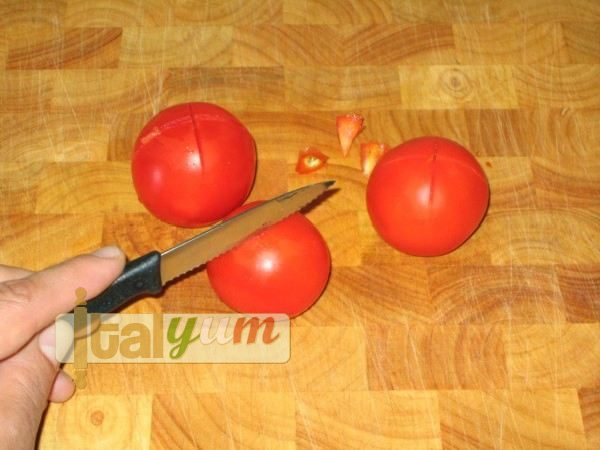
- Plunge the tomato in boiling water for 10-15 seconds.
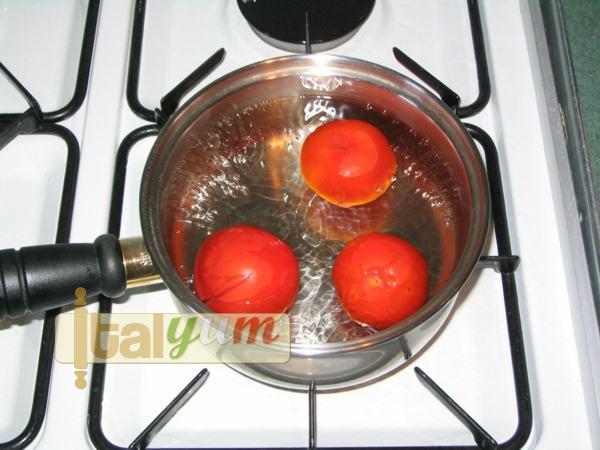
- Remove the tomatoes from the pan using a slotted spoon.

- Peel the tomato. The skin should come off very easily.
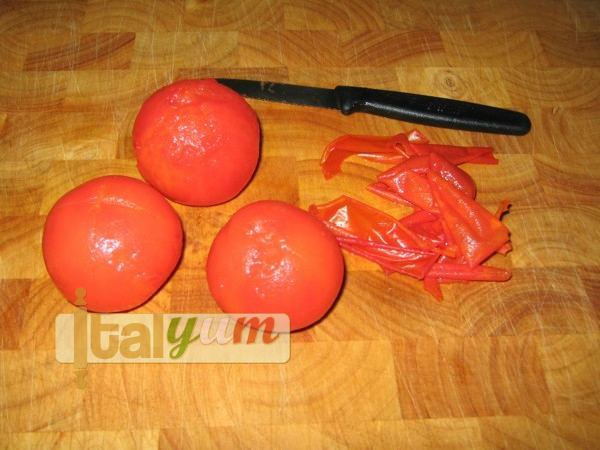
- Now, quarter the tomatoes.

- Remove and discard the seeds. You should be left only with the clean petals.
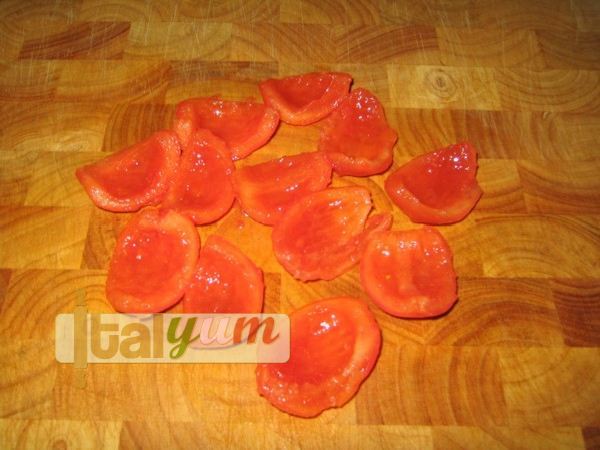
- Cut each petal into strips.
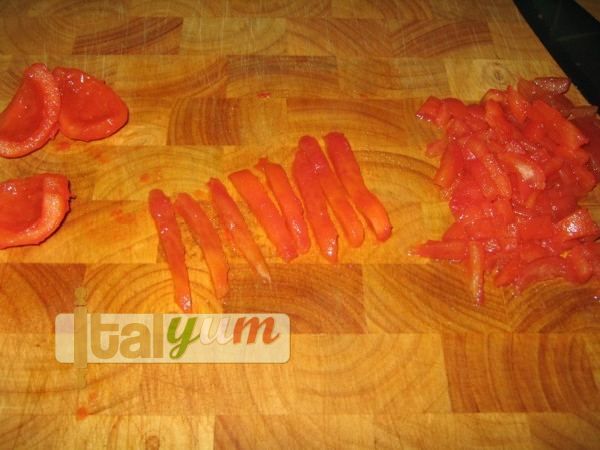
- Cut the strips into dice.

- In Italy we call this “dadolata di pomodoro” (also known as concassé – this French term is the most popular if you browse the internet). The advantage of using the dadolata is that it delivers a finer result at the end, when we add it to the pan, because there are no seeds or skin.
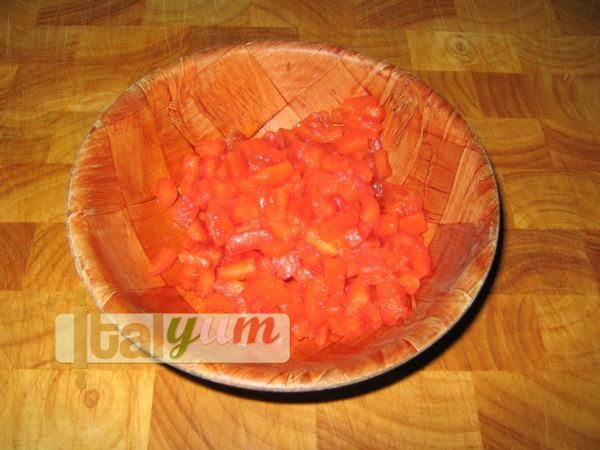
- After about an hour, take the bowl out of the fridge, discard the water, rinse the rabbit cuts and finally pat them dry.
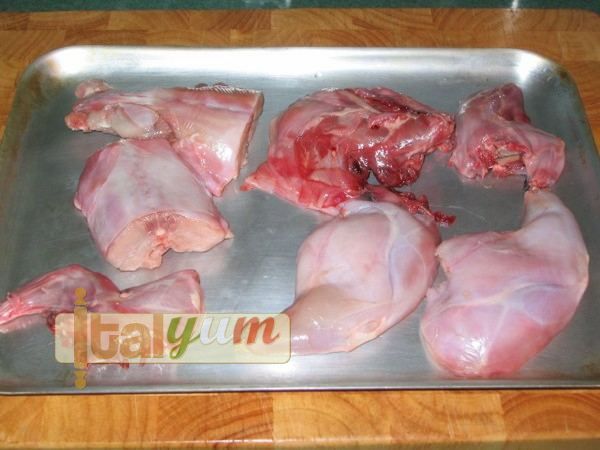
- Take a large sauté pan and pour a generous lug of olive oil into the pan (about 120 ml – 1/2 cup). Heat the oil on medium heat.
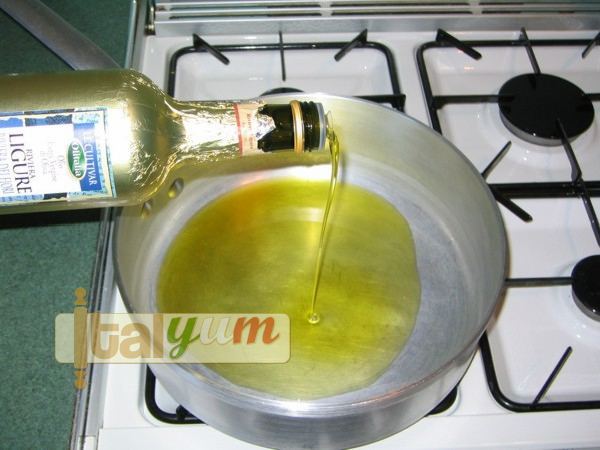
- When the oil is hot, add the onion.
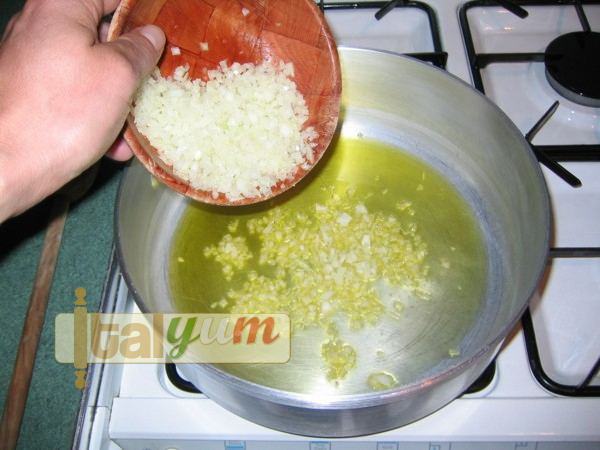
- Then, add the crushed cloves of garlic.
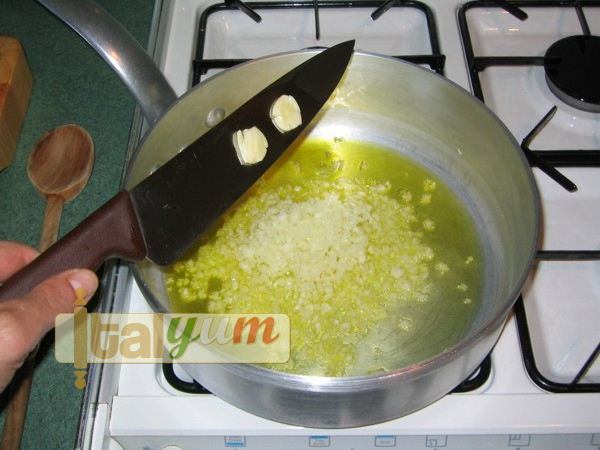
- Finally, add the herbs and sauté for 3-4 minutes, to give some colour.
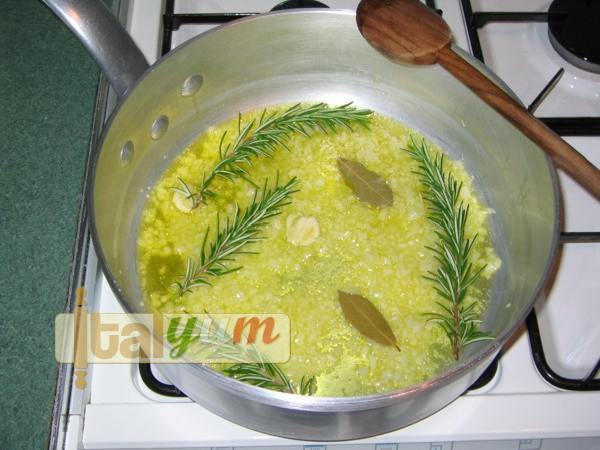
- Then, add the rabbit cuts into the pan.
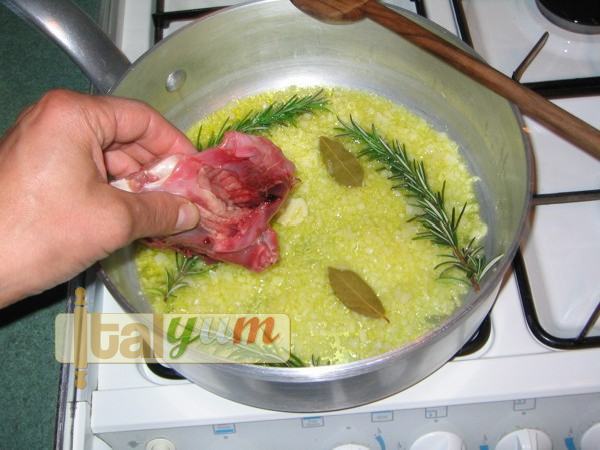
- Cook each side of the cuts for few minutes.
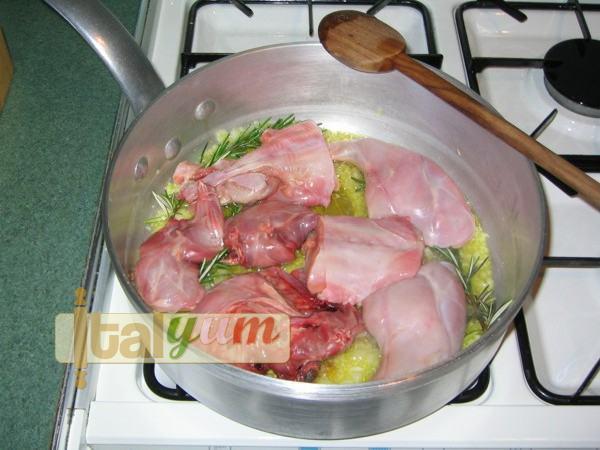
- Here, I am cooking the second side.
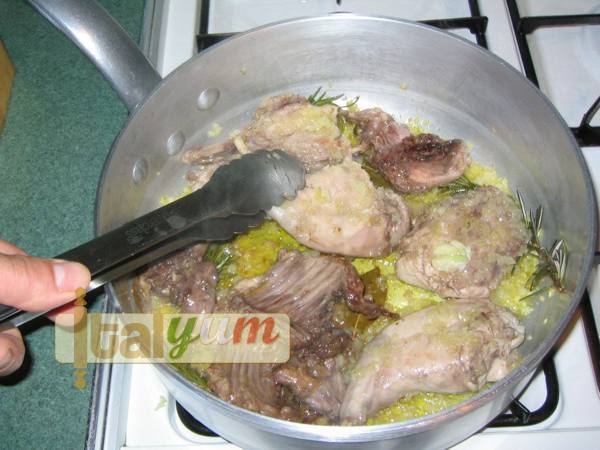
- Once both sides of the cuts have been lighlty browned, add the wine.
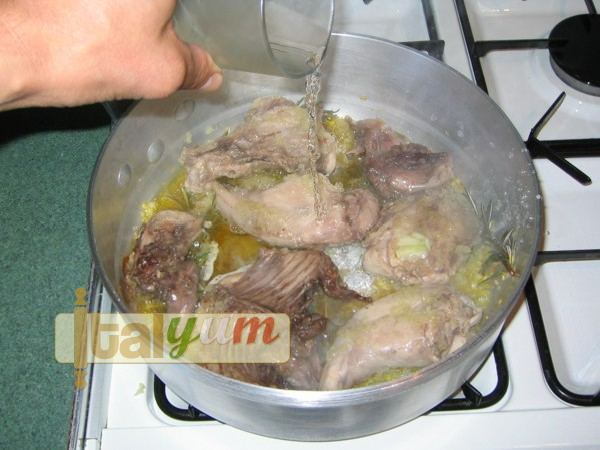
- Shake the pan so that the liquid goes all around the bottom of the pan and cook until the liquid is reduce by half.

- Then, add half of the stock available. Technically speaking you should not need any more stock; however if something goes wrong and you think that the pan content is getting too dry or slightly burnt, you still have some extra stock left.
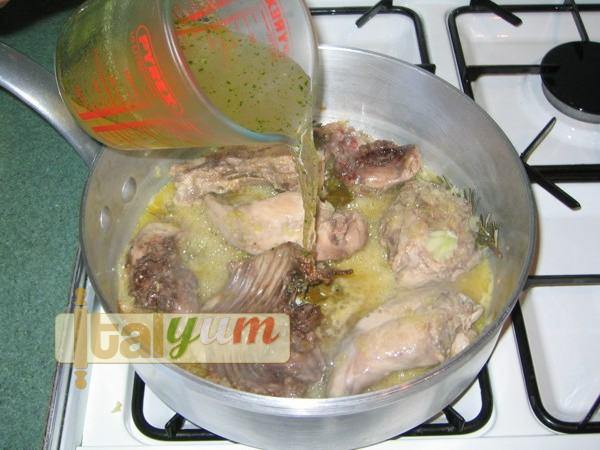
- Season with salt.
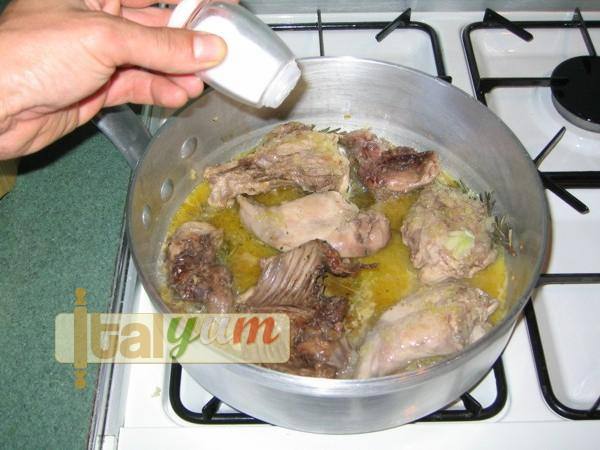
- Season with black pepper.
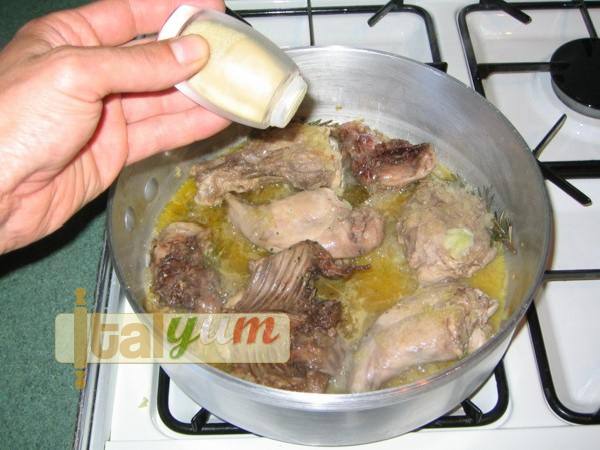
- Turn the heat to low, cover with a lid and cook for about 1 hour, turning the rabbit cuts every 20 minutes.
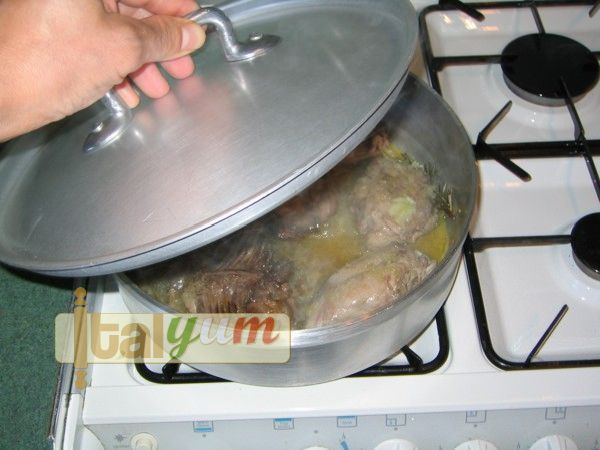
- This pictures shows the pan content after 40 minutes cooking on low heat. As you can see, the bottom sauce is not reduced enough (still too liquid).
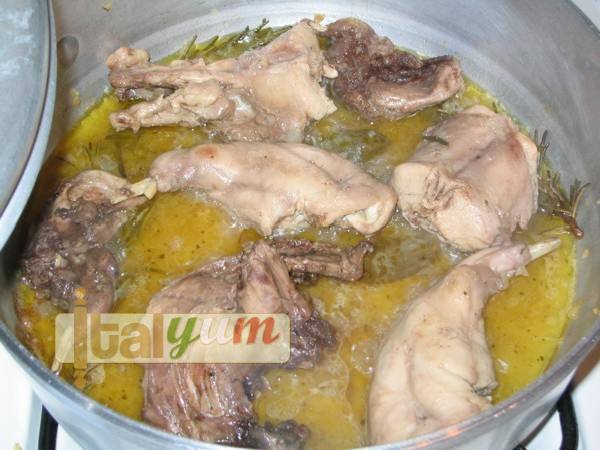
- To complete the hour cooking on low heat, the best way is to partially cover the pan with the lid. This way, part of moisture will leave the pan and the sauce in the bottom will reduce to the right consistency.
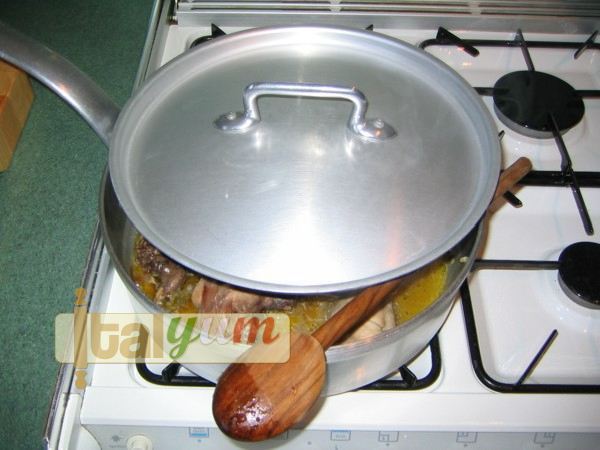
- After the rabbit cuts have been cooking on low heat for 1 hour, add the olives (the olives must be added into the pan 20-30 minutes before the end of the cooking).
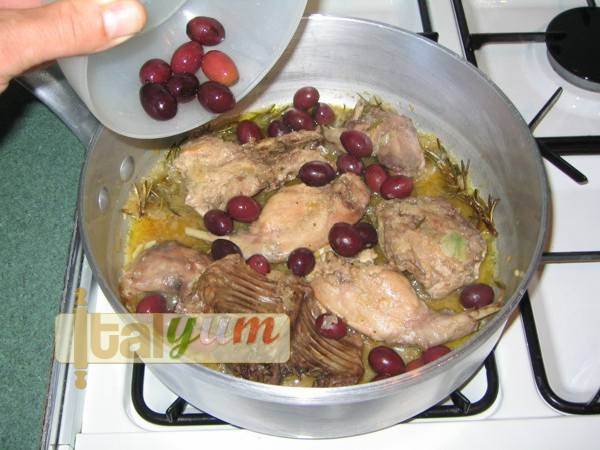
- Then, add the pine kernels.

- Give the whole thing a good stir and continue cooking for another 10 minutes with the lid on.
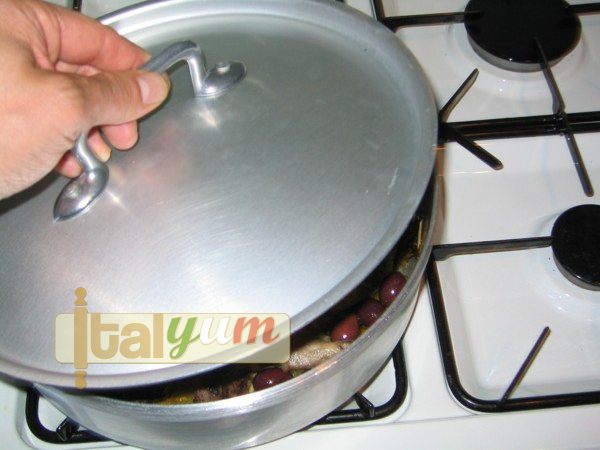
- Once the 10 minutes have passed, add the diced tomatoes into the pan. These need only 10 minutes to cook and you can do so without lid, so that we start to reduce the sauce to a thicker consistency.
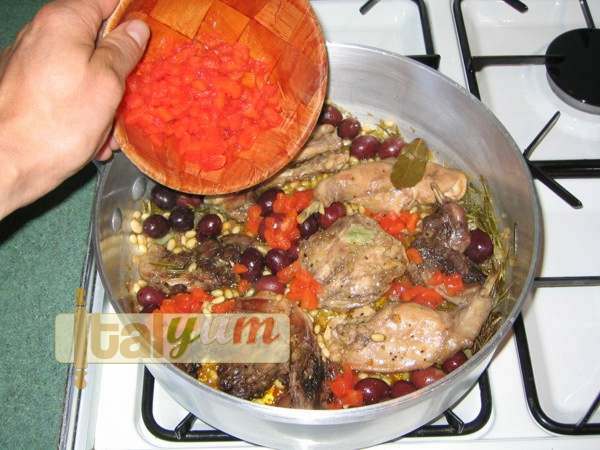
- This is what you should get after about 90 minutes cooking.
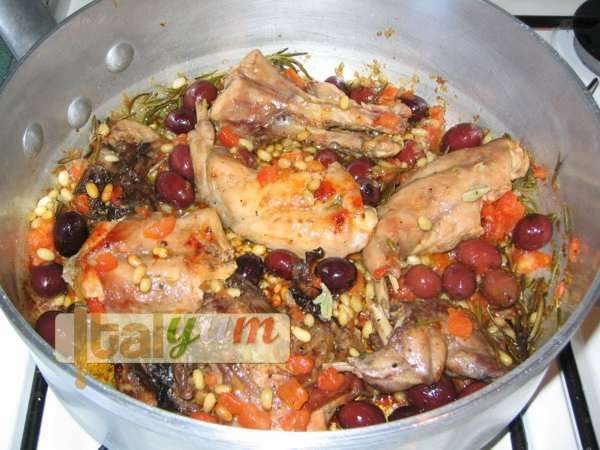
- Plate the rabbit and serve.
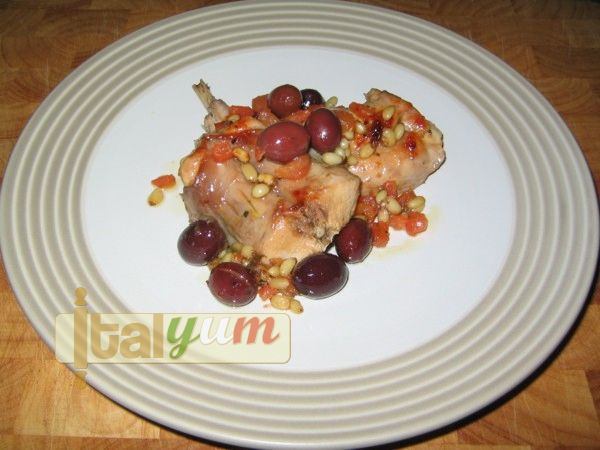
Nutrition
Calories: 650kcal
Tried this recipe?Let us know how it was!



